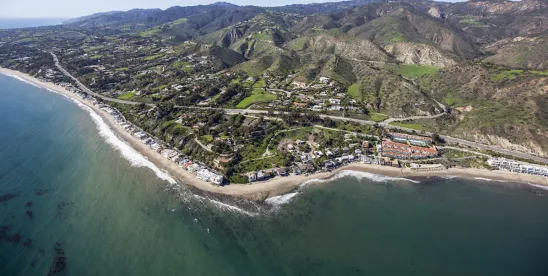Carbon capture storage (CCS) projects aim to capture carbon dioxide from the atmosphere or directly from point sources (e.g., industrial processes) and store it permanently in deep underground geologic formations. As the push for CCS continues to gain momentum, regulators and industry alike are developing an interest in offshore options for it.
Federal waters. Under the Outer Continental Shelf Lands Act (OCSLA), as amended in 2021 by the Infrastructure Investment and Jobs Act (IIJA), the Department of the Interior is authorized to “grant a lease, easement, or right-of-way on the” Outer Continental Shelf (that is, submerged lands within US jurisdiction) for activities that, inter alia, “provide for, support, or are directly related to the injection of a carbon dioxide stream into sub-seabed geologic formations for the purpose of long-term carbon sequestration.” The Bureau of Ocean Energy Management (BOEM) and the Bureau of Safety and Environmental Enforcement (BSEE) are undertaking a joint rulemaking effort to develop regulations in accordance with the directives provided in the IIJA. However, because those regulations are not yet finalized, it is impossible to predict just how BOEM and BSEE will implement the IIJA.
Depending on the nature of the proposed activity, a CCS project in federal waters may also trigger the Marine Protection, Research and Sanctuaries Act (MPRSA), which generally prohibits the dumping of material into ocean waters without a permit. Under the IIJA, CCS activities permitted under the OCSLA and involving the injection of a carbon dioxide stream into sub-seabed geologic formations do not trigger regulation under the MPRSA. However, other types of CCS proposals (e.g., depositing agricultural waste on the seabed) may trigger the MPRSA regulatory framework.
State waters. States can also lease land in their territorial waters for CCS projects. Any geologic CCS project in a state’s waters is likely to implicate an overlapping array of federal and state authorizations. Depending on the scope of the project, interested federal regulators could include (for illustration only) the US Army Corps of Engineers, the Federal Energy Regulatory Commission, or the Environmental Protection Agency (EPA).
Of particular importance, the Safe Drinking Water Act creates an overlapping federal and state regulatory program for the permitting of underground injection wells administered by the EPA. Earlier this year, Louisiana received primacy with respect to Class VI underground injection wells, which are necessary for CCS projects involving geologic sequestration beneath state waters. A CCS project proposed in Louisiana state waters would require an operating agreement or a lease issued by the Louisiana State Mineral and Energy Board and a Coastal Use Permit from the Louisiana Department of Energy and Natural Resources’ Office of Coastal Management, among other approvals.
We expect to see more clarity in the permitting framework that applies to offshore CCS projects as the various relevant regulators continue to develop offshore CCS regulations and policies. To make the most of the potential benefits of offshore CCS technology, regulators should craft policies that maximize environmental benefits without sacrificing the economic viability of projects.





 />i
/>i

